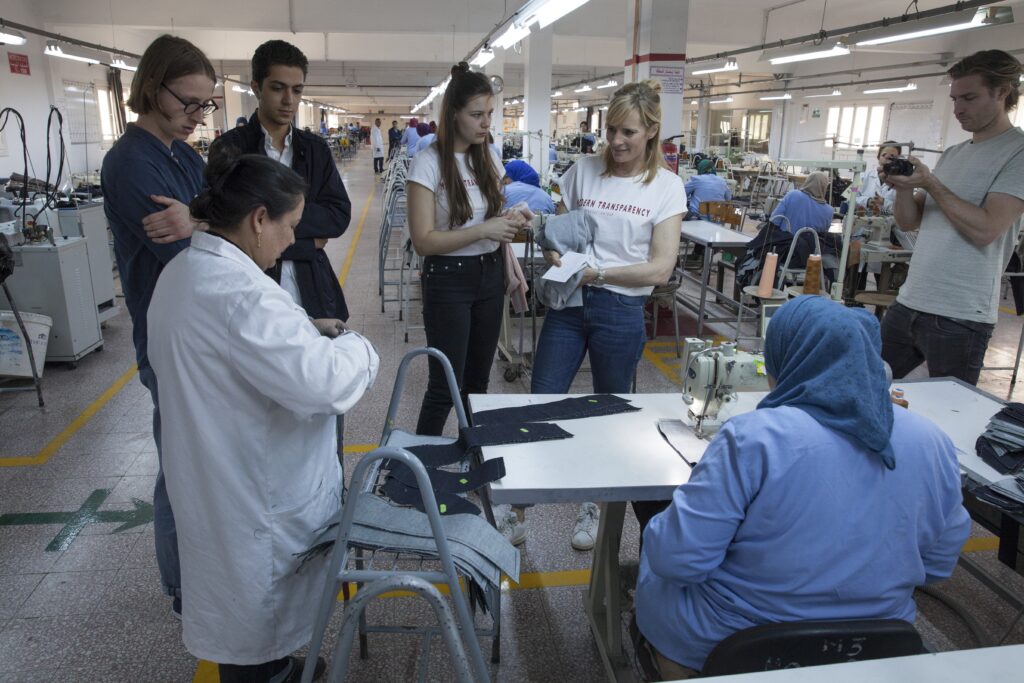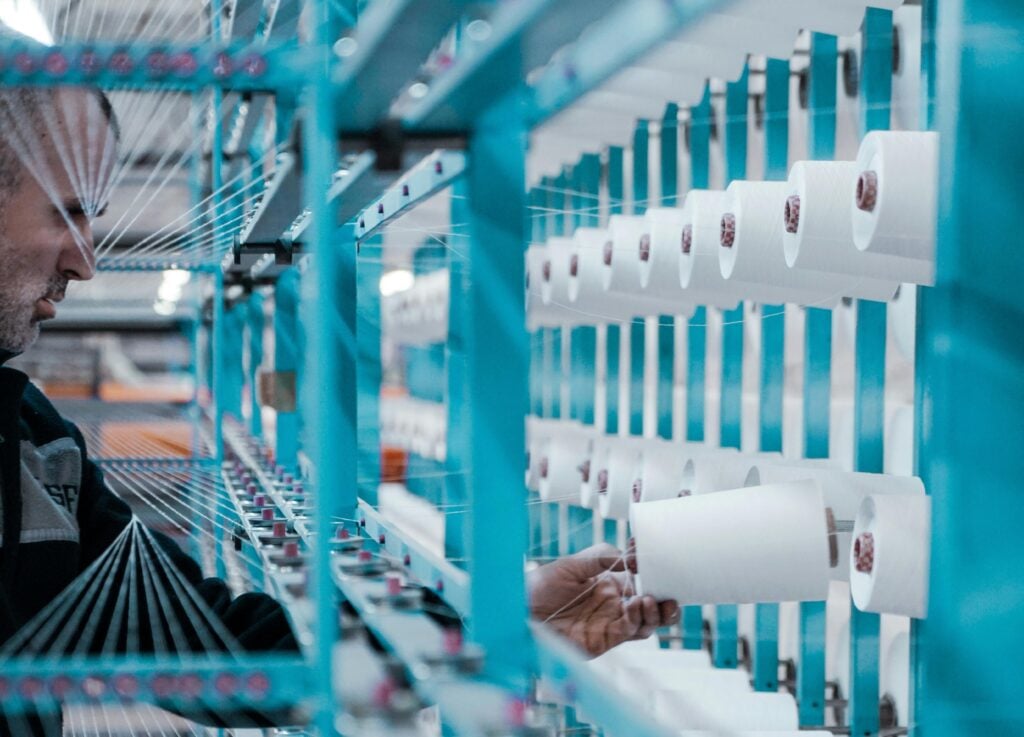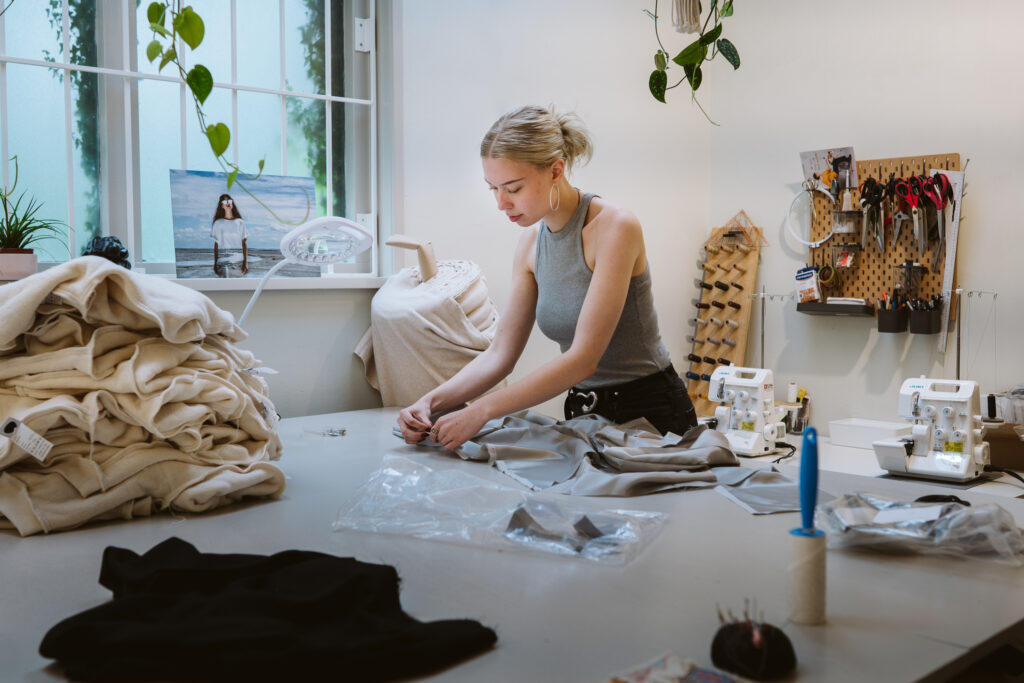How the Netherlands is Weaving a Circular Textile Industry
With an ambitious roadmap for circularity by 2050, the Dutch ecosystem enables companies to craft inventive, creative solutions across the textile value chain
The global textile industry is at a crossroads. Responsible for 3-7% of global CO2 gas emissions and 17-20% of industrial water pollution, it is one of the most resource-intensive sectors worldwide. Yet, it is also one of the most promising arenas for sustainable innovation. Enter the Netherlands: a country that is leading the way toward a circular textile future.
With a national goal of achieving a fully circular economy by 2050 – and a thriving circular textile value chain as a cornerstone of that vision – the Netherlands is transforming policy into practice, and ambition into action. This ecosystem, positioned at the intersection of the Dutch creative and chemical sectors, offers a unique opportunity for companies to collaborate and grow. It’s a place where innovators can future-proof an industry with scalable, sustainable solutions, while pioneering new global standards in the process.
Transforming a linear industry into a circular model requires new ways of thinking and modes of collaboration. If you want to see how it can be done, look to the Dutch.
Investing in the Netherlands: The time is now
Industry leaders around the globe recognize that now is the time to invest in circular textiles solutions that are sustainable, scalable and economically viable – the question is where? The Netherlands offers a compelling value proposition that can be distilled as follows:
- Quality and forward-thinking are hallmarks of Dutch textile production. Combining first-class expertise with creative innovation, the Netherlands ensures compliance with the highest European and international standards. The Dutch are frontrunners in embracing EU-wide circular standards.
- The Netherlands is a launchpad into the European market with its strategic location, advanced supply chains and trade networks. Dutch consumers are also aligning their fashion choices with sustainable values, creating an ideal test market for eco-friendly products and platforms.
- Industrial-scale recycling solutions are imperative for a circular textile chain, and the Netherlands is taking bold steps on this front. A recent example is the France-based chemicals company Reju, which is re-engineering the textile recycling and production process at its first-of-a-kind commercial plant.
- The textile sector in the Netherlands thrives on joint innovation. From circular designs and bio-based dyes to new recycling techniques, the country’s regional clusters offer unmatched performance and specialization. Industry hubs translate research into real-world solutions and
- Stakeholder participation and global cooperation are central to the Dutch approach. Companies, academia and government collaborate closely to share the Netherlands’ successes with the world. With centuries of experience in doing business abroad, the Dutch excel at uniting stakeholders across borders to build meaningful partnerships.
These points illuminate the multifaceted tapestry that makes up the Dutch circular textile ecosystem. Let’s dive deeper into the details.
A national strategy for circular textiles
The Dutch government has laid out a clear and ambitious roadmap for circular textiles as it plans its next Policy Programme for Circular Textile 2025-2030. By 2030, all textile products introduced to the market must consist of 50% sustainable materials, of which at least 30% is recycled material. By 2035, the goal is to halve the ecological footprint of the textile sector in terms of emissions, water usage, chemicals and microplastics. And by 2050, the entire Dutch textile chain must be fossil-free, circular and socially responsible.
These goals are backed by a robust pan-European policy agenda. That includes the EU’s Extended Producer Responsibility scheme introduced in 2023, which makes producers accountable for the collection, reuse and recycling of textiles. The Netherlands also aligns closely with EU legislation such as the Ecodesign for Sustainable Products Regulation, the Corporate Sustainability Due Diligence Directive and the Digital Product Passport initiative.
What does all this look like in practice? The Dutch approach to circularity follows an “R-strategy” model, which aims to shorten the various waste loops that comprise a value chain. These R-strategies flow across three major stages: narrowing the loop in the waste prevention phase by reducing the consumption of raw materials and other resources; slowing the loop in the user phase by extending the lifespan of products; and closing the loop at the end of use by recycling and recovering resources.
A close-knit ecosystem of innovation and collaboration
Bolstered by its national strategy, the Netherlands has developed one of the most dynamic circular textile ecosystems in the world. It is a collaborative environment tailormade for circular innovation, which depends on complex, interlocking networks of stakeholder cooperation. To that end, the Dutch triple helix model proves vital in building bridges between companies, public initiatives and academic institutions.
If you’re searching for potential supply chain partners, you can find them with Dutch industry associations like Modint or the government’s Versnellinghuis (Acceleration House) program. If you’re curious about building connections within a local ecosystem, you can turn to Dutch Circular Textile Valley, a national initiative connecting five hubs with distinct specialties – Amsterdam, Twente, Arnhem, Brabant and Rotterdam.
In addition, if you want to tap into expert talent or world-leading research in circular textiles, it’s possible with knowledge institutions like TNO, Erasmus University Rotterdam, Amsterdam Fashion Institute, Saxion University of Applied Sciences, ArtEZ University of the Arts and Wageningen University & Research. And if you’re looking to access funding opportunities, you can check out EU programs like Horizon Europe and Interreg, along with Dutch initiatives such as Invest-NL, RVO’s Circular Chain subsidies and Fashion for Good.
These organizations are just a small sample of governmental actors, startup and scale-up financiers, industry associations and networks, system innovators and education & research institutions that populate the Dutch circular textile ecosystem. There is no better place to find the partners and support you need to scale up your innovations in the European market.
Circular business models gaining ground

MUD Jeans
Today, the Netherlands welcomes solutions across the entire textile value chain: research, design, material sourcing, production, packaging, distribution, consumer or industrial use, digitalization & traceability, reuse & repair, sorting, recycling and beyond. This comes at a time when global investment in circular textile companies is rising fast, having doubled to nearly €1 billion worldwide between 2020 and 2022. Simply put, the Dutch circular textile sector is more than just visionary – it’s lucrative.
From local startups and global ventures, successful circular business models are everywhere you look in the Dutch landscape. It starts with ingenuity and creativity in design, a well-known strength of the Netherlands. The country is a hotbed of in-demand fashion designers and clothing brands that are implementing circular principles into their work.
Many brands are applying this mindset to multiple touchpoints in their processes. For example, Amsterdam-born MUD Jeans is the world’s first circular denim brand, known for its innovative jeans leasing model and recycled cotton. Also based in the Dutch capital, Otrium partners with brands to resell inventory to ensure it doesn’t end up in a landfill, while United Repair Centre offers B2B repair and life-extension services for apparel.
Moving to other loops in the supply chain, France-based Reju recently selected Chemelot Industrial Park in Sittard-Geleen for its first industrial-scale textile regeneration center. The company joins a growing community of innovators reengineering the textile recycling and production process. Brightfiber Textiles, for example, launched the world’s first fully circular textile factory in Amsterdam. Other Dutch firms like DyeCoo and Circotex are pioneering water-free CO2 dyeing technologies, while Frankenhuis and Wolkat are leaders in mechanical recycling of post-consumer textiles.
Join the circular movement
Some countries are preparing for the future of textiles. The Netherlands is actively making that future a reality. For forward-thinking investors, brands and innovators ready to lead in sustainability, the Dutch circular textile ecosystem offers fertile ground for maximizing growth, societal impact and global leadership.
Ready to join a movement that’s redefining international standards and scaling solutions toward a circular economy? Get in touch with our team to learn how you can grow and collaborate in the Netherlands.
22 September 2025
